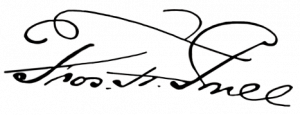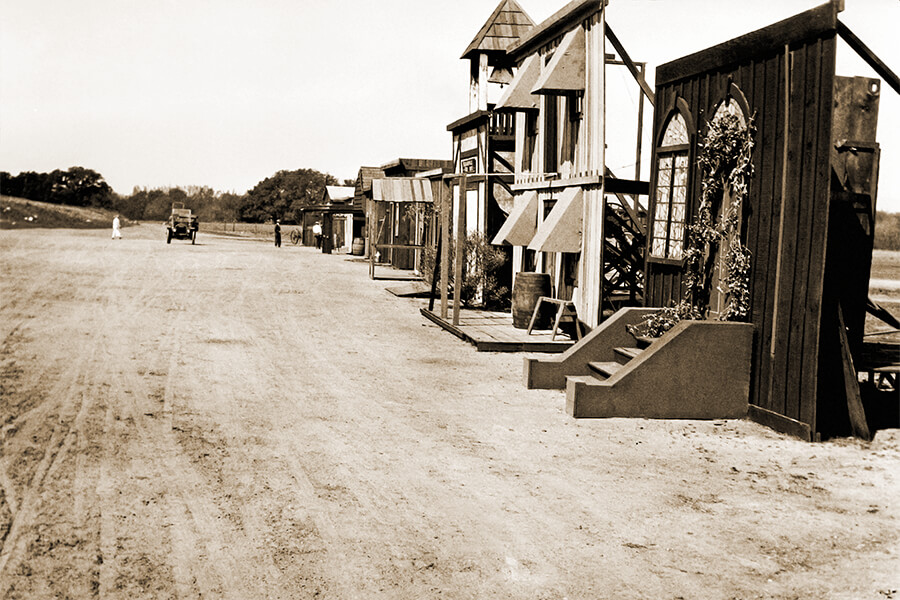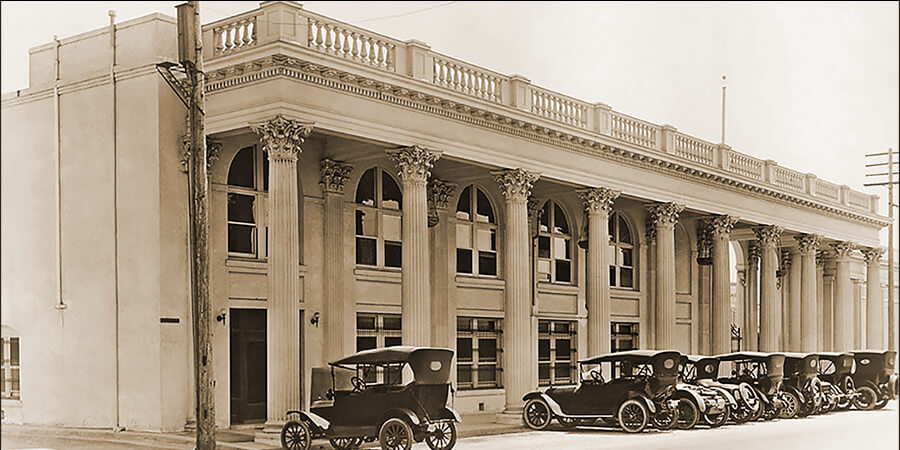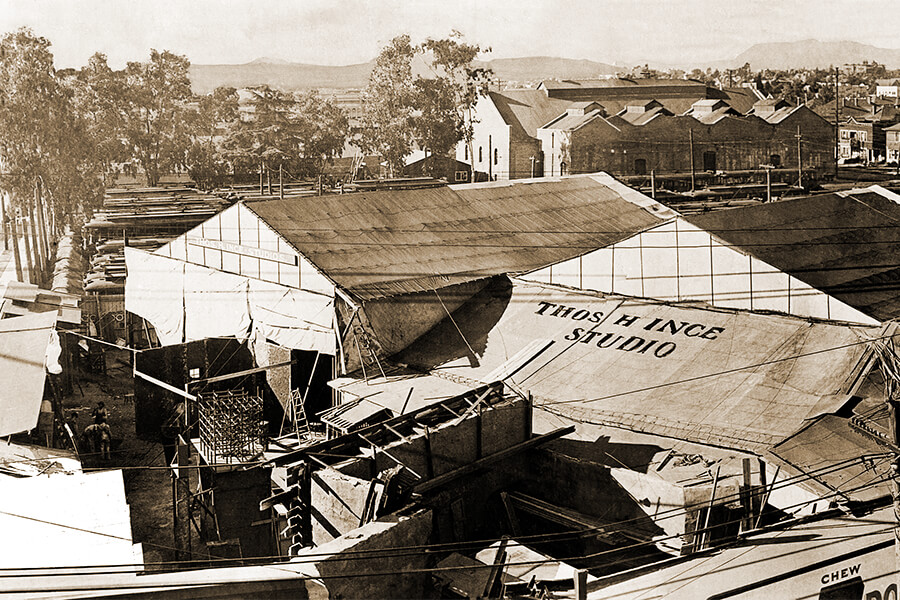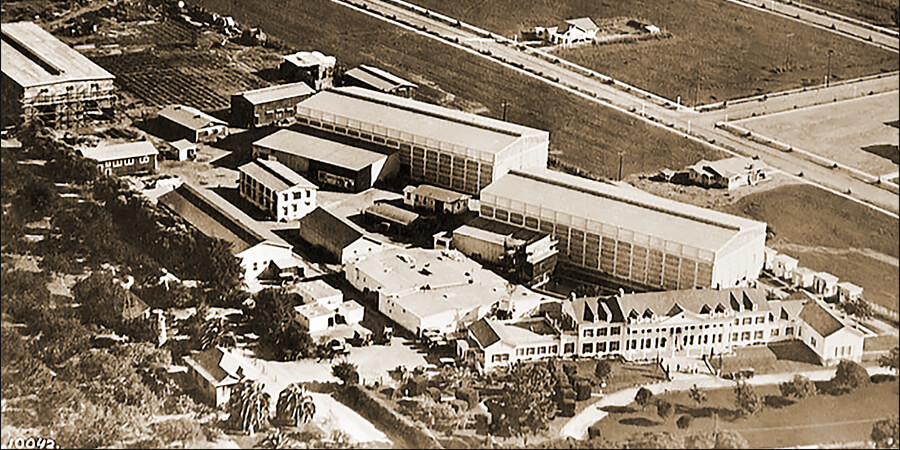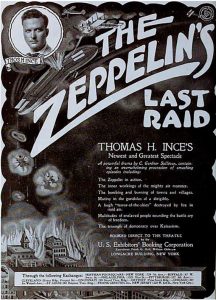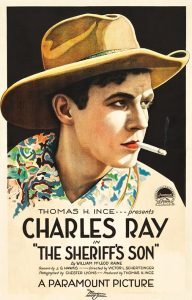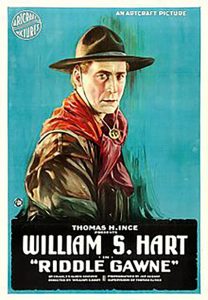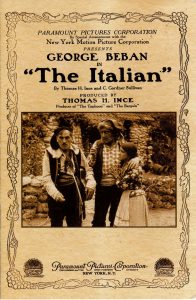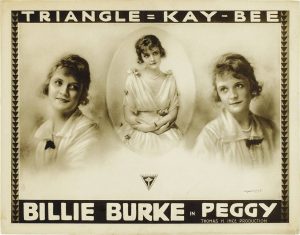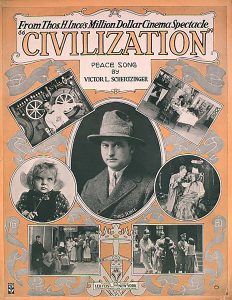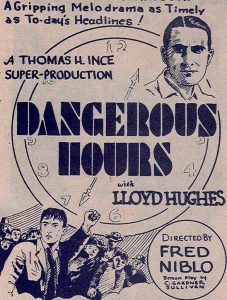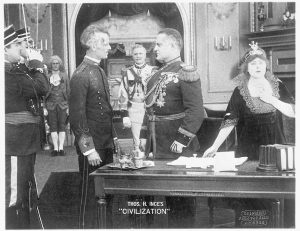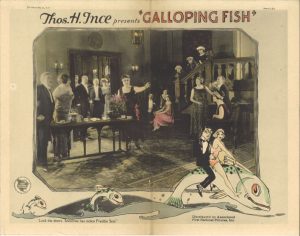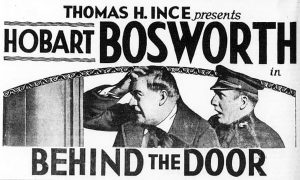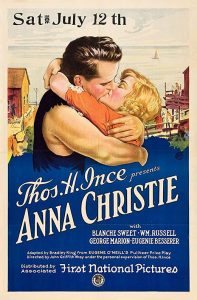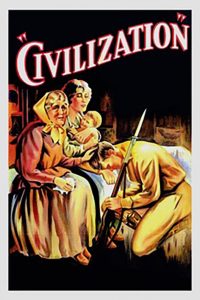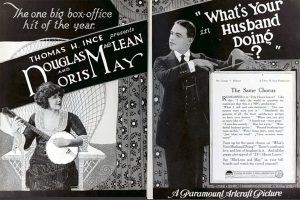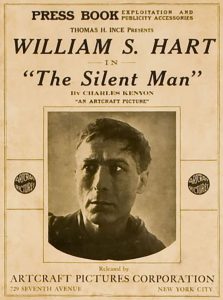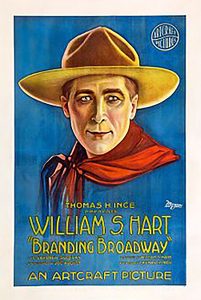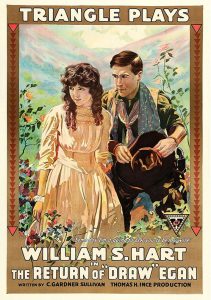The Man Who Would Be King
Thomas H. Ince
Thomas Harper Ince
1880-1924
click to enlarge

click to enlarge
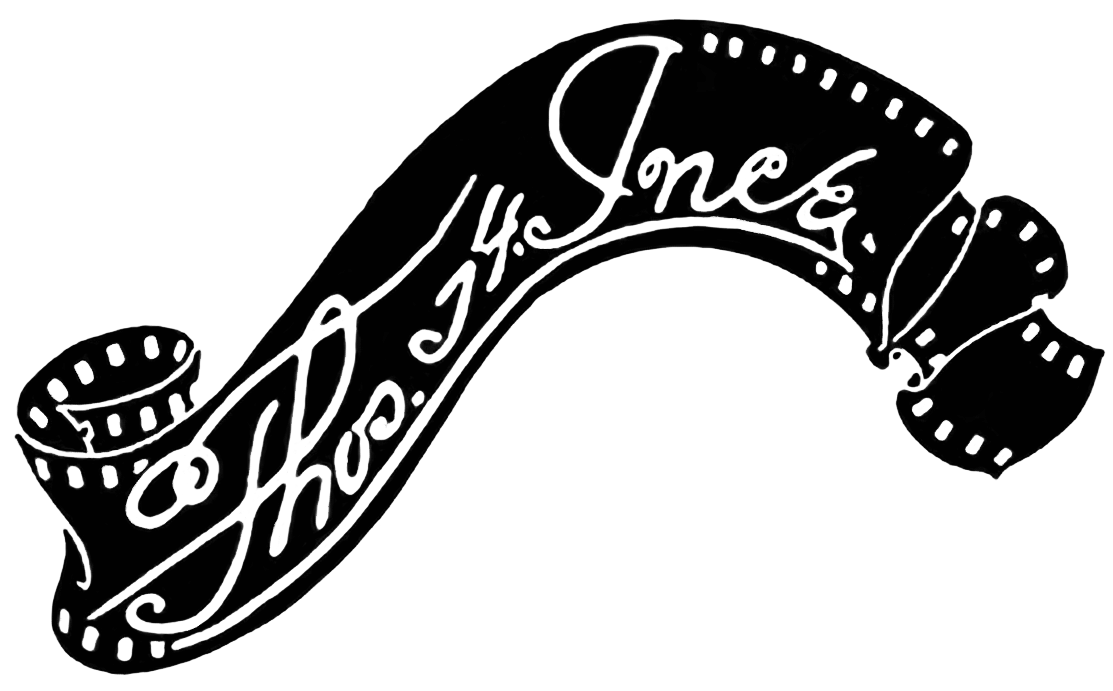
Thomas Harper Ince was one of the true pioneers and luminaries of the early film industry. Had he not died far too soon, his name would reign alongside those of D.W. Griffith, Cecil B. DeMille, and Mack Sennett. For those who know industry history, his star could not be brighter.
Ince was born November 6, 1880, in Newport Rhode Island, the son of English immigrants. At an early age, the family moved Thomas and his brothers and sisters to Manhattan, New York. His father worked as a stage actor and agent getting his entire family involved in the theatrical business. Thomas found himself working not just as an actor, but in a variety of office and backstage jobs. This set the groundwork for his transition to the movies. Older brother John and younger brother Ralph were also in the movie business.
On October 19, 1907, Thomas Ince married Elinor ("Nell") Kershaw and together they had 3 sons. Ince was an ever committed family man.
On November 19, 1924, Thomas Harper Ince died a mysterious death on board the Oneida, the yacht of William Randolph Hearst. To this day how he died is wrapped in controversy. Ince was just 44 years of age.
Ince on set
click to enlarge
click to enlarge
Ince Becomes a Major Player in the Movie Business
Builds Three Studios
Early in his career Ince built the first major, fully contained studio, Inceville, in the Santa Monica Mountains of Los Angeles. It was there he invented the role of the Producer by single-handedly overseeing multiple productions simultaneously. This allowed Ince and his organization to be extremely productive.
His second studio, Ince-Triangle in Culver City became the iconic M-G-M Studio and still stands as Sony Pictures Studio. His third studio, just half a mile north away, is now Culver Studios and is the home of Amazon Streaming.
Thomas Ince-the budding theater actor.
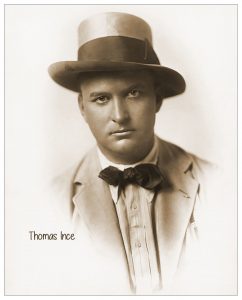 Ince's family were regular figures in the legitimate theater business while young Tom was growing up. His father, an English immigrant, was a theatrical agent and erstwhile actor, and his mother was a musical comedy actress. He (and his siblings) were frequently on the road with their parents or were routinely dropped off with friends and family while Mother and Father earned their livings.
Ince's family were regular figures in the legitimate theater business while young Tom was growing up. His father, an English immigrant, was a theatrical agent and erstwhile actor, and his mother was a musical comedy actress. He (and his siblings) were frequently on the road with their parents or were routinely dropped off with friends and family while Mother and Father earned their livings.
At age 6 he was already performing spoken word dramas and singing in choirs, funerals, and weddings. Young Tom performed a variety of backstage and office jobs eventually working his way on-stage. By the time he reached his teens, he was an accomplished stage and vaudeville actor.
The Ince family looked at the "movies" (as film actors were called) with scorn and contempt. But it was while between theatrical acting jobs early in his adulthood that he had an accidental meeting with an old acting friend. Ince saw Joseph Smiley step from his own car and very well dressed. Smiley was obviously doing well for himself. Even though Ince always thought of himself as the better clearly Smiley could afford things Ince could only dream of.
Smiley invited Ince to lunch, an event that changed the young man's life. He suggested that Ince try "the movies."
The rent was due. Thomas had only ten bucks in his pocket. So he decided to take his friend's advice and went to Carl Laemmle'sramshackle IMP Studio on the top floor of an old manufacturing on building 56th St. in New York to apply for work. He was hired as a $5.00 a day actor to play the "heavy" (the bad guy). He became fascinated with the movie-making process, particularly the director's role.
After just a single movie, word got out that he was pretty good, and was hired away by American Mutoscope and Biograph Company where his wife Elinor, was already working. He was able to negotiate for a nice raise: $15.00 a day. He made just one film for Biograph when a call came from IMP asking him to come back to the studio. He was asked to play bit parts, but Ince had other ideas. He wanted to direct. By the time he walked out of company manager Tom Cochrane's office, he had taken over an unfinished movie for a director who walked off the job. Thomas H. Ince was sent to Cuba (to be out of the reach of the prying eyes of Edison's Motion Picture Patents Trust) as the head of his own production unit, where he stayed for the better part of a year.
His career was launched.
By 1911 Ince was working for the New York Motion Picture Company (NYMPC) a rag-tag company founded by Adam and Charles Kessel, and Charles O. Baumann. They sent him to California to head up their newly formed Bison 101 unit in Edendale taking over from film pioneer Fred Balshofer. He found the small one-acre lot to be too small and inadequate for what he envisioned, so he moved the company to a studio that would become known as Inceville where he pioneered large sale production of westerns.
All through Ince's life, he was an innovator, and much of his legacy is in the creation of new ways of making films. He was evolving from just a director to hiring and managing several directors.
Ince invents the role of the movie Producer and the "Studio System"
Inceville
Santa Ynez Canyon, Santa Monica Mtns.
1911-1915
It was at Inceville that Thomas Ince revolutionized the movie-making process, inventing what we now know as the role of the Producer. He knew he wanted to make several movies simultaneously wanting to control and pre-plan every aspect of the movie-making process. Prior to this, the director was in charge of a movie. Storylines were largely made up on the spot with little planning and movies were filmed sequentially from shot to shot. This made it difficult to shoot more than one picture at a time.
As a producer, Ince hired several production managers and directors, Ince could control, oversee, and shoot several movies at a time. While movies were traditionally shot sequentially, he began to shoot out of order to give him an even greater efficiency. By supervising his production managers, who supervised one or more directors, Ince provided the model of what would become the "studio system." From his office, Ince could supervise the activities of the entire studio. As a self-contained studio, everything was done on-site, from scriptwriting through producing the final print for distribution. He even provided meals for the employees and housing, when necessary.
Ince ran Inceville from 1911 through 1919. When he became a partner in Triangle Films in 1915 Inceville was redubbed Triangle Ranch. Though he still owned the studio it was taken over by his old friend and erstwhile employee, William S. Hart in ca 1917-18, who renamed "Hartville."
Ince-Triangle Studios. his second major studio
10202 Washington Blvd., Culver City
In 1915 Thomas Ince, needing a more "factory-like" studio to make his movies, made a deal with Harry Culver, a real estate developer who had just formed a new city, Culver City, a few miles inland from Inceville. Culver gave the land to Ince hoping Ince could attract other moviemakers and their employees to the new town. It worked. Culver City became a movie hub of its own and still is to this day.
The new studio bore his name, and that of his new partnership, Triangle Pictures.
Ready to move into the new 14-acre studio in 1916, it was the most organized of its day, as well as one of the largest in the country. Financed by Adam Kessel, Jr. and Charles O. Baumann (former owners of NYMPC and their new company, KayBee Pictures, and organizer Harry Aitken formerly owner of Mutual), the new partnership also included Ince and fellow producing powerhouses D.W. Griffith and Mack Sennett. The studio emerged as the most powerful in the business. Keeping Inceville as a backlot until 1919 Ince brought the bulk of his production to the new lot while Sennett stayed based in Edendale and Griffith in East Hollywood. Using the studio system practices he pioneered at Inceville, the partnership added film distribution and exhibition completing a very powerful vertical integration.
Ince built 7 state of the art stages, a huge administration complex of buildings, and a studio front that resembled a Greek colonnade.
In 1917 Ince, Griffith, and Sennett fell out with their partners. They became dissatisfied with dwindling creative control over their pictures.
All parties were all interested in ending the relationships.
Thomas Ince sold his interests in Triangle to his partners, Harry Aitken, Charles O. Baumann, and Adam Kessel. Griffth had left the company a few months before Ince, and Sennett would leave a few months after. Griffith sold his studio back to Triangle, Sennett bought his from the company outright. Ince, the largest shareholder in Triangle, was ready to get out completely.
Once the transaction was completed, the remaining partners told Ince to pack his bags and get the hell out of their studio. Thomas H. Ince just grinned. He had a hidden Ace up his sleeve.
“All right," he said to them. "Now, you get your studio off my land.”
The perplexed partners wondered what he was talking about. As it turned out Ince was the sole owner of the land that the Triangle studio stood on. 33 acres worth. If they didn't want to lose their studio, Triangle would have to pay dearly.
Ince negotiated a huge sum of money for the real estate. Then he made a call to Harry Culver. He turned right around, bought 12 acres from Harry, and built a brand new studio half a mile north, where he could still see the Triangle lot.
Ince went on to much bigger things. Triangle was soon out of business.
The Third Studio
Thomas H. Ince Studios
6336 Washington Blvd.
1919-1924
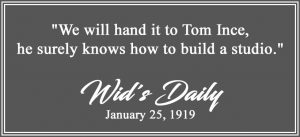 During construction of Ince's new studio, he moved production a few miles away to the defunct Biograph Studio at 906 Girard St., downtown L.A. He stayed there until the new plant was ready just up the block. Ince loved doing things in a big way. His previous studio was fronted by a Greek colonnade. This new studio was fronted by a replica of George Washington's Mt. Vernon residence. It became known as "The Mansion", and still stands today. He built three modern stages (two daylight and 1 dark), two large prop shops, a carpentry shop and a cluster of 40 support buildings, including a motor pool, fire department, and a hospital...and a swimming pool As usual, Ince built the most modern studio in the industry.
During construction of Ince's new studio, he moved production a few miles away to the defunct Biograph Studio at 906 Girard St., downtown L.A. He stayed there until the new plant was ready just up the block. Ince loved doing things in a big way. His previous studio was fronted by a Greek colonnade. This new studio was fronted by a replica of George Washington's Mt. Vernon residence. It became known as "The Mansion", and still stands today. He built three modern stages (two daylight and 1 dark), two large prop shops, a carpentry shop and a cluster of 40 support buildings, including a motor pool, fire department, and a hospital...and a swimming pool As usual, Ince built the most modern studio in the industry.
Ince's third studio was a success, even after his death. It continued to expand and today is the home of Amazon Studios.
At age 44, Ince's future was ahead of him. His status in the industry is assured but had he lived he most likely would have the status of his friends, Cecil B, DeMille, Mack Sennett, and D.W. Griffith. His studios live on.
Ince's Death
On November 19, 1924, Thomas Harper Ince died. The circumstances are still mysterious and a bit controversial. Returning to the dock after a cruise on William Randolph Hearst's ship, The Oneida, Ince's body was met by a hearse and taken to the county coroner. He had died on board the ship.
Officially his death is listed as a heart attack. It was known that Ince was not in the best of health, and his wife confirmed this and stuck to the heart attack story for the rest of her life. The death certificate bears this out. Nevertheless, rumors persisted that he was mistakenly shot by Hearst.
Hearst thought he was aiming at Charles Chaplin, who Hearst thought was having an affair with his lover, Marion Davies. Hearst, the story goes, fell into a jealous rage, and pulled the trigger, mistakenly shooting Ince in the back of the head. Some witnesses claim Ince's head was wrapped in a bloody towel when he was taken off the yacht. Others say it was merely covered in the usual way. Others say he walked off the yacht under his own power, dying later. He was hastily cremated before an autopsy was performed, and a quick memorial service was arranged. Officials simply took the world of his personal doctor about his manner of death.
Whatever happened, we will never know the truth.
The Legacy of Thomas Harper Ince
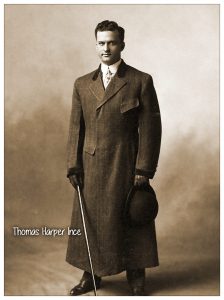 Thomas Ince was one of the most prolific moviemakers of the mid silent period. He is credited with producing over 600 movies and that is probably a considerable undercount.
Thomas Ince was one of the most prolific moviemakers of the mid silent period. He is credited with producing over 600 movies and that is probably a considerable undercount.
His first studio, Inceville, is historically the largest ever. His two Culver City studios are still in operation. The first one was later owned by Samuel Goldwyn, then became the iconic MGM Studios, and is now Sony Pictures Studios. Nell Ince, his widow, now owned the studio had neither the temperament nor the energy to keep up production so, after his death, Ince's second Culver City studio was bought by his friend, Cecil B. DeMille. It was later purchased by RKO and was the studio where the original King King was shot. It was also owned by Pathe and later was Selznick International Studios, the studio where David O. Selznick made Gone with the Wind. It was a part of the three studio Desilu empire and was the home to The Andy Griffith Show, Batman, and many other iconic television shows and movies. The studio still exists and today it is Culver Studios and is the home of Amazon Studios and the popular web site IMDB.com
Had Ince lived, he most likely would be credited as the greatest producer of his or any period and would be a household name, like his contemporaries Cecil B. DeMille, D.W. Griffith, David O.Selznick, Sam Goldwyn, and Mack Sennett.
Thomas Harper Ince's place in film history is cemented solidly.
